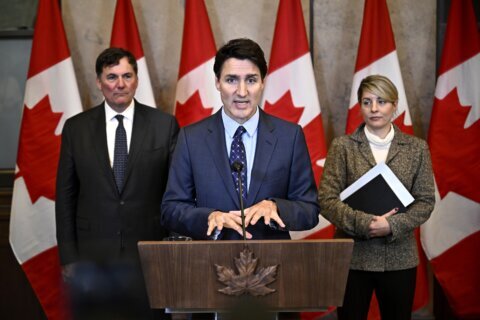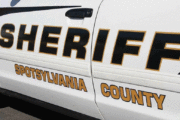Recovering from a stroke is frustrating. When time passes and you’re still not where you want to be — with no signs of progress — you might be tempted to accept the status quo. For some stroke patients, trouble with swallowing, fatigue, weakness or paralysis, muscle spasms, loss of balance, vision changes, speech problems or other effects can persist. But don’t give up, experts say. Although it takes effort and results may be gradual, patients can refine or maintain motor skills with practice and by working with therapists months or years after a stroke, according to the National Institutes of Health. Below, stroke specialists suggest possibilities for restarting a stalled recovery.
[See: 10 Ways to Lower Your Risk of Stroke.]
Ask for a specialist. At the beginning, stroke recovery follows a relatively predictable path, says Dr. Monica Verduzco-Gutierrez, medical director of the brain injury and stroke program at TIRR Memorial Hermann, a rehabilitation hospital in Houston. Patients undergo rehabilitation in the hospital, often followed by intensive rehab in inpatient facilities and as outpatients. Later, however, recovery can plateau. “I see this all the time,” she says. “That’s when patients need to come back in if they’re not recovering like they were; if they’re not getting better.” She suggests seeing a physiatrist , a doctor who specializes in rehabilitation and restoration of function: “Get an assessment of what can be done next.”
Practice for permanent results. Long-term expectations have changed, says Verduzco-Gutierrez, who is also an assistant professor at the McGovern Medical School at UTHealth. “The data used to say that most neurological and functional recovery occurred in the first six months,” she says. “But now we know [that’s] not true. Recovery can happen for years and sometimes even decades.” However, she tells patients, it becomes harder over time: “It’s not going to happen spontaneously like before.” Continued effort during your physical, occupational, vocational and at-home therapy — as prescribed — is essential.
[See: When Health Treatments Go From Hospital to DIY.]
Consider a clinical trial. Research continues to explore ways to help people recover after a stroke, says Dr. Mitchell Elkind, a professor of neurology and epidemiology at Columbia University in New York City. With the development of new neuro-stimulation devices, medications and treatment techniques, he says, “It’s worth people checking in with their physician or local rehabilitation center and seeing if any trials are going on.” Verduzco-Gutierrez agrees that clinical trials allow patients to potentially benefit from advances at the forefront of emerging technology.
Watch for later decline. Sometimes the problem is not just stalled progress long after the initial stroke, but moving backward. “We do see some people, much later, start to show some subtle decline,” Elkind says. “That may be due to secondary events, like a new small stroke.” In those cases, more physical therapy may be indicated.
Work on one-sided weakness. Stroke often affects one side of the body alone. That’s where constraint-induced movement therapy comes in. It encourages people to use their weaker arm to practice tasks by restricting the unaffected arm, or in some cases just the hand and wrist, with a mitt. The therapy is time-intensive, with supervised sessions lasting six hours daily for two weeks on a standard schedule. In return, patients may see benefit years after the stroke, Elkind says. But constraint-induced movement therapy is not widely available, he notes, and people often have to pay for treatment out of pocket, which can amount to several thousand dollars.
Address depression. Research shows depression after stroke hinders recovery, Verduzco-Gutierrez says, and physicians should assess patients for it. “If people are depressed, they’re not going to recover as they should,” she says. “If they’re treated for depression that can help move their recovery along.” Behavioral counseling and antidepressant medication can help patients overcome depression.
Get a driving assessment. Being forced to rely on others for transportation because of vision loss or other stroke-related changes only adds to frustration and depression. However, driving may not be as impossible as it seems. Driving-assessment programs include clinical evaluations and on-road assessments by driver rehabilitation specialists. They can suggest a variety of workarounds for chronic stroke effects, such as special prism eyeglasses and vehicle mirrors to compensate for reduced vision.
Supplement nutrition if needed. Swallowing problems, or dysphagia, may affect up to 65 percent of stroke patients, according to the American Stroke Association. Soon after a stroke, speech-language pathologists can identify swallowing issues and create a treatment plan to restore mouth and throat-muscle coordination. While most patients recover their ability to eat healthy food, it remains difficult for some, putting them at risk for malnutrition. Some patients eat what they can, Verduzco-Gutierrez says, and if that doesn’t meet their needs, they may have a feeding tube placed so they can avoid skimping on nutrients.
Alleviate “foot drop.” Foot drop, the inability to lift the front part of the foot due to muscle weakness or paralysis, impairs balance and makes walking a challenge for some stroke survivors. Foot drop is another reason to see a physiatrist, Verduzco-Gutierrez says. An ankle foot orthosis, or brace, can improve ankle and knee stability and increase walking speed. Neuro-stimulation with small electric pulses can help improve function. Physical therapists can recommend stretching and strengthening exercises and offer balance training to reduce the risk of falls.
Build endurance. Fatigue is a potential long-term stroke complication. “[People] are physically deconditioned, because they’re not working at the activity level they were before,” Verduzco-Gutierrez says. “Also, with the areas of the brain affected, it can cause fatigue.” Exercise helps address fatigue, as well as muscle weakness and spasticity, or tightness. Many hospitals and rehabilitation facilities offer supervised, open-gym programs at low cost to promote stroke and cardiac rehabilitation.
[See: 10 Seemingly Innocent Symptoms You Shouldn’t Ignore.]
Socialize and find support. After a stroke, “people should be socializing,” Verduzco-Gutierrez says. “One of the big determinants of people who don’t do very well is if they don’t have a good social-support network.” Reaching out to family, friends and support groups, whether online or in person, can help stroke survivors surmount recovery plateaus.
More from U.S. News
11 Screening Tests You Should (or Shouldn’t) Consider
Do’s and Don’ts of Home Medical Devices
11 Things Seniors Should Look for in a Health Provider
Is Your Stroke Recovery Stalling? originally appeared on usnews.com







